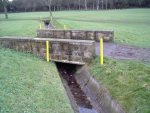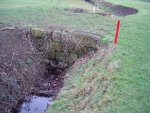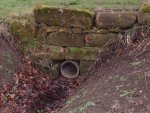Ian_S
Challenge Tour Pro
Pretty sure we got this right, but last round my ball found itself sat on a bridge that crosses a drainage ditch that is marked as a water hazard. After a little discussion we decided it was in the hazard so I played it without grounding the club.
One FC suggested dropping a ball and playing it as though the rule was free drop from the bridge, and then checking at the end of the round but I decided against that as I was pretty sure it wasn't a free drop and, even if it was, I'd actually played a decent shot from the bridge so I was happy to forgo the free drop and play it where I was.
That all sound good and right?
One FC suggested dropping a ball and playing it as though the rule was free drop from the bridge, and then checking at the end of the round but I decided against that as I was pretty sure it wasn't a free drop and, even if it was, I'd actually played a decent shot from the bridge so I was happy to forgo the free drop and play it where I was.
That all sound good and right?


